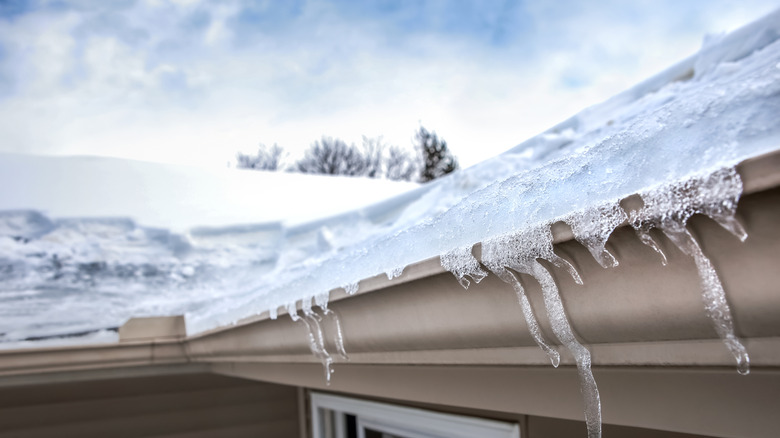How To Prepare Your Home For A Polar Vortex
If news about a polar vortex striking your region makes you reach for your blanket with nervous hands, keep in mind that your house feels just the same. Although the term "polar vortex" may not quite sound like the cataclysmic end of the world, it can definitely wreak enough havoc on your home to burn a hole in your wallet. This can be anything from freezing and bursting pipes to rising heating bills and damage to the roof and foundations of your house. Preparing your home against these potential damages involves insulating your pipes, ensuring safety standards with your home heating, and maintaining proper drainage around the foundation.
But what exactly is a polar vortex? The term refers to a region of low-pressure over the poles with cold air circulating inside it. This "vortex" of counter-clockwise flowing air strengthens over the winter. Sometimes, during the winter, cold air can escape from this region and travel southwards to hit regions of the United States, along with parts of Europe and Asia. Apart from the dangers to your home from its brutal temperatures, the polar vortex also brings repercussions for your winter garden, since a lot of your plants may not survive it.
Prevent burst pipes by maintaining warm temperatures and insulation
One of the biggest potential consequences of a cold snap like the polar vortex is pipes freezing and bursting. According to the Insurance Institute for Business and Home Safety, burst pipes are one of the major causes of damage insurance claims during the cold season. There are several steps you can take to prevent these damages from happening in the first place. First of all, keeping the temperature warm inside your home is a no-brainer. Aim for a minimum of 68 degrees Fahrenheit throughout the day. Keep kitchen cabinet doors open to let the warm air circulate around the pipes.
Another way to safeguard against freezing damage to pipes is to let the faucets drip just a little bit of water. In fact, if you pick the right faucet — the one farthest away from the water source — just one dripping faucet can be enough for preventing the pipes in your entire house from bursting. Although flowing water in pipes can still freeze if temperatures drop to extreme levels, dripping faucets prevent any buildup of pressure from the freezing and thawing of ice inside the pipes by giving it a vent with the drip. Moreover, uninsulated pipes are at more risk of being damaged, so consider insulating yours. After all, spending a little on prevention can save thousands of dollars later.
Use safe heating methods and good drainage
Although you should have your home well-heated for a polar vortex, there are some dangers that accompany home heating as well. Home heating being the second biggest cause of fires in the country, make sure you keep any flammable substance at least 3 feet away from your heaters. Furthermore, never use your oven or a cooking range for heating purposes. You should also make sure to seal cold drafts around windows and doors to stop heat from escaping outside. In fact, winter is a good time to find all the sneaky spots where drafts are getting into your home and fix them. You can also use a simple towel for sealing if you find yourself in an emergency without the proper tools for this purpose.
Before the polar vortex hits, you should also know the location of the main water shut-off valve in your house. In case a pipe bursts, you should immediately turn this valve off to prevent any further damage. It is also a good idea to turn your water sprinkler system off. Make sure you protect your trees from snow and ice damage by propping up heavy branches and pruning any that have broken.
A cold snap from the polar vortex can be a nuisance for your home's foundation as well. Repeated freezing and thawing of soil underneath the foundation can cause heaving of the basement floor. If the ground soil freezes and expands, cracks can also appear in your foundation from the hydrostatic pressure exerted against the walls. To prevent such scenarios, make sure your drainage does not get clogged up with ice and that water always gets directed away from the foundation.


